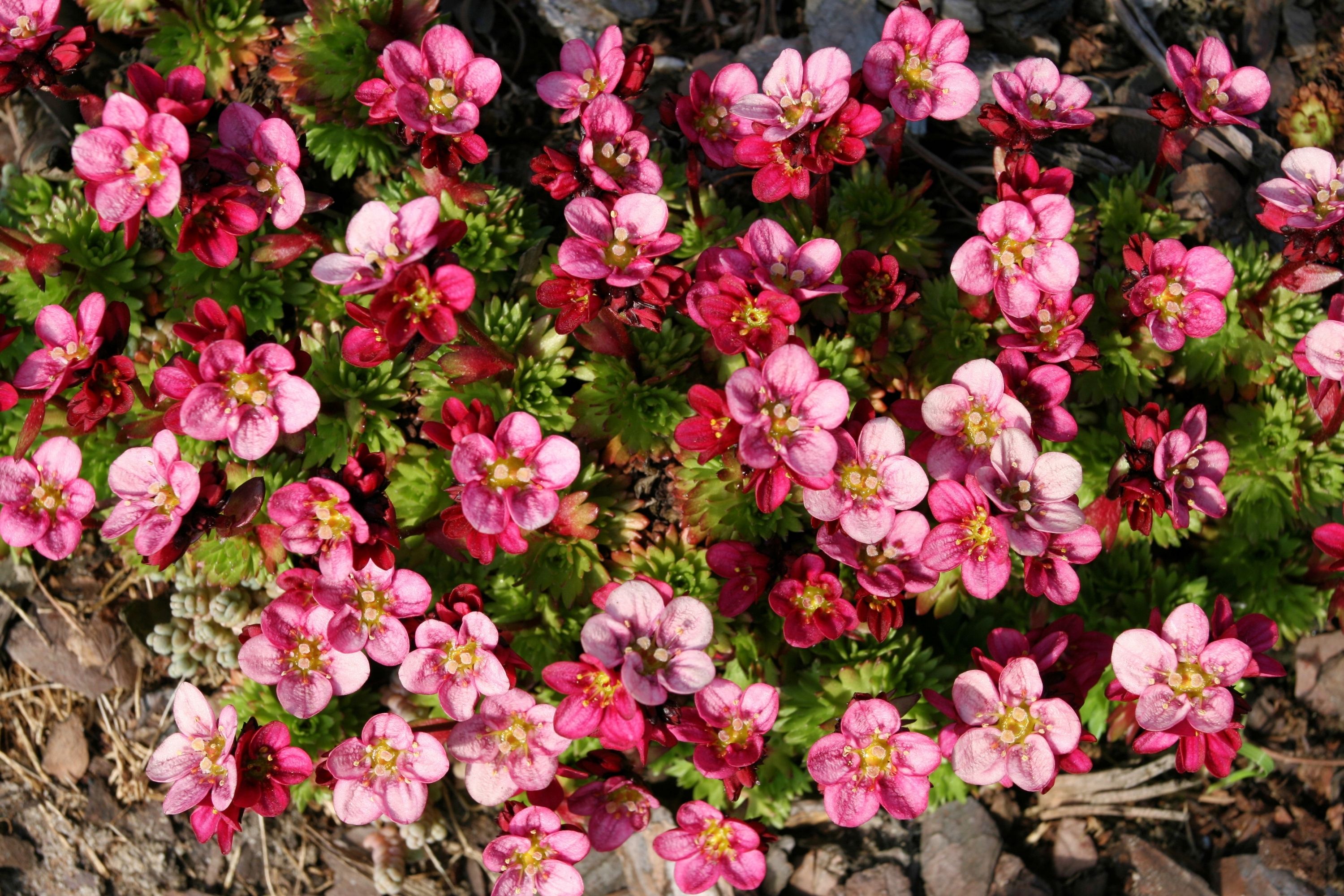Saxifraga kolenatiana
(Saxifraga kolenatiana)

Description
Saxifraga is the largest genus in the family Saxifragaceae, containing about 440 species of holarctic perennial plants, known as saxifrages or rockfoils. The Latin word saxifraga means literally "stone-breaker", from Latin saxum ("rock" or "stone") + frangere ("to break"). It is usually thought to indicate a medicinal use for treatment of urinary calculi (known as kidney or bladder stones), rather than breaking rocks apart. Most saxifrages are small perennial, biennial (e.g. S. adscendens) or annual (e.g. S. tridactylites) herbaceous plants whose basal or cauline leaves grow close to the ground, often in a rosette. The leaves typically have a more or less incised margin; they may be succulent, needle-like and/or hairy, reducing evaporation. The inflorescence or single flower clusters rise above the main plant body on naked stalks. The small actinomorphic hermaphrodite flowers have five petals and sepals and are usually white, but red to yellow in some species. Stamens, usually 10, rarely 8, insert at the junction of the floral tube and ovary wall, with filaments subulate or clavate. As in other primitive eudicots, some of the 5 or 10 stamens may appear petal-like. and it lives in tundral ecosystems. Saxifrages are typical inhabitants of Arctic–alpine ecosystems, and are hardly ever found outside the temperate parts of the Northern Hemisphere; most members of this genus are found in subarctic climates. A good number of species grow in glacial habitats, such as S. biflora which can be found some 4,000 metres (13,000 ft) above sea level in the Alps, or the East Greenland saxifrage (S. nathorstii). The genus is also abundant in the Eastern and Western Himalayan alpine shrub and meadows. Though the archetypal saxifrage is a small plant huddling between rocks high up on a mountain, many species do not occur in such a habitat and are larger (though still rather delicate) plants found on wet meadows. Various Saxifraga species are used as food plants by the caterpillars of some butterflies and moths, such as the Phoebus Apollo (Parnassius phoebus). Charles Darwin – erroneously believing Saxifraga to be allied to the sundew family (Droseraceae) – suspected the sticky-leaved round-leaved saxifrage (S. rotundifolia), rue-leaved saxifrage (S. tridactylites) and Pyrenean saxifrage (S. umbrosa) to be protocarnivorous plants, and conducted some experiments whose results supported his observations, but the matter has apparently not been studied since his time.
Taxonomic tree:







